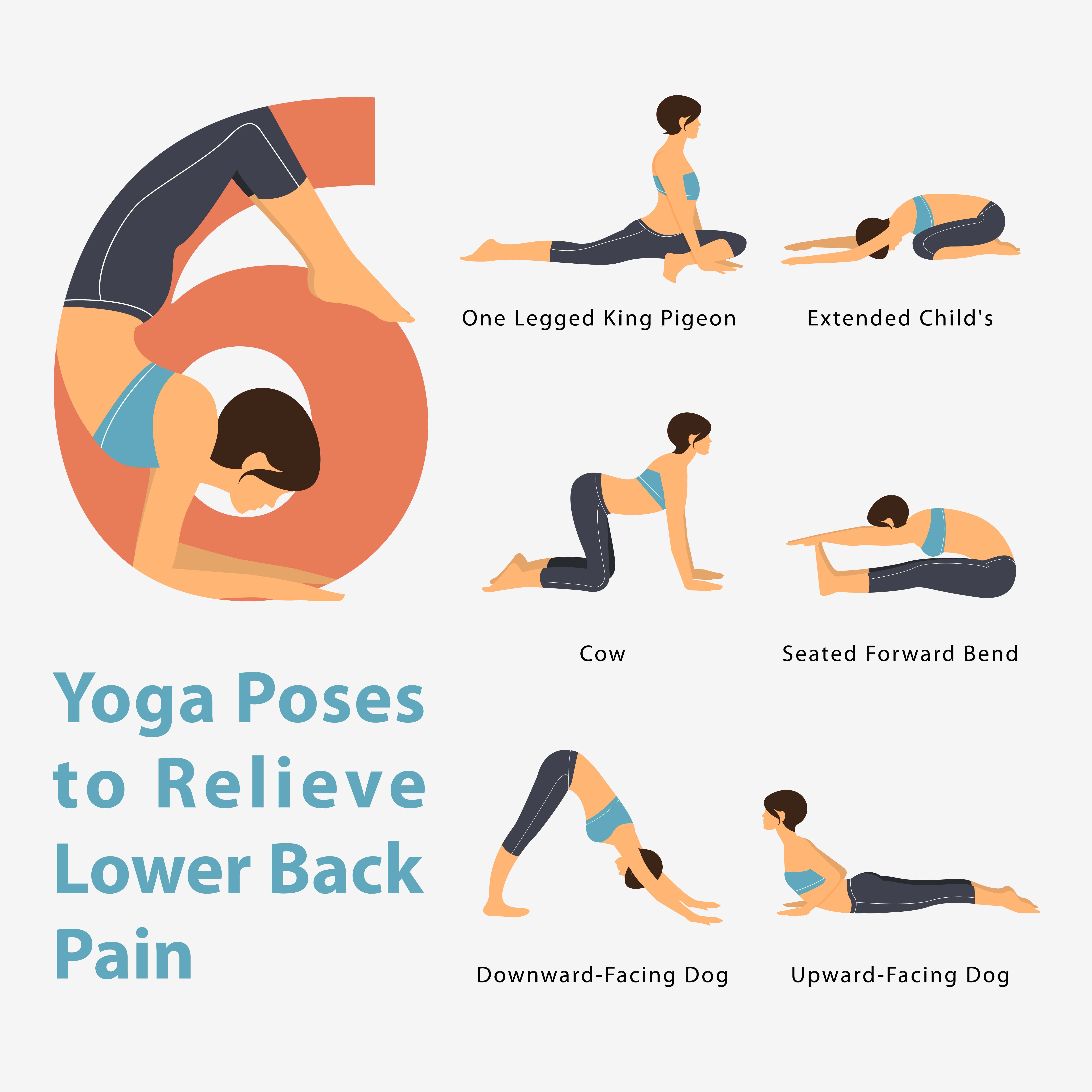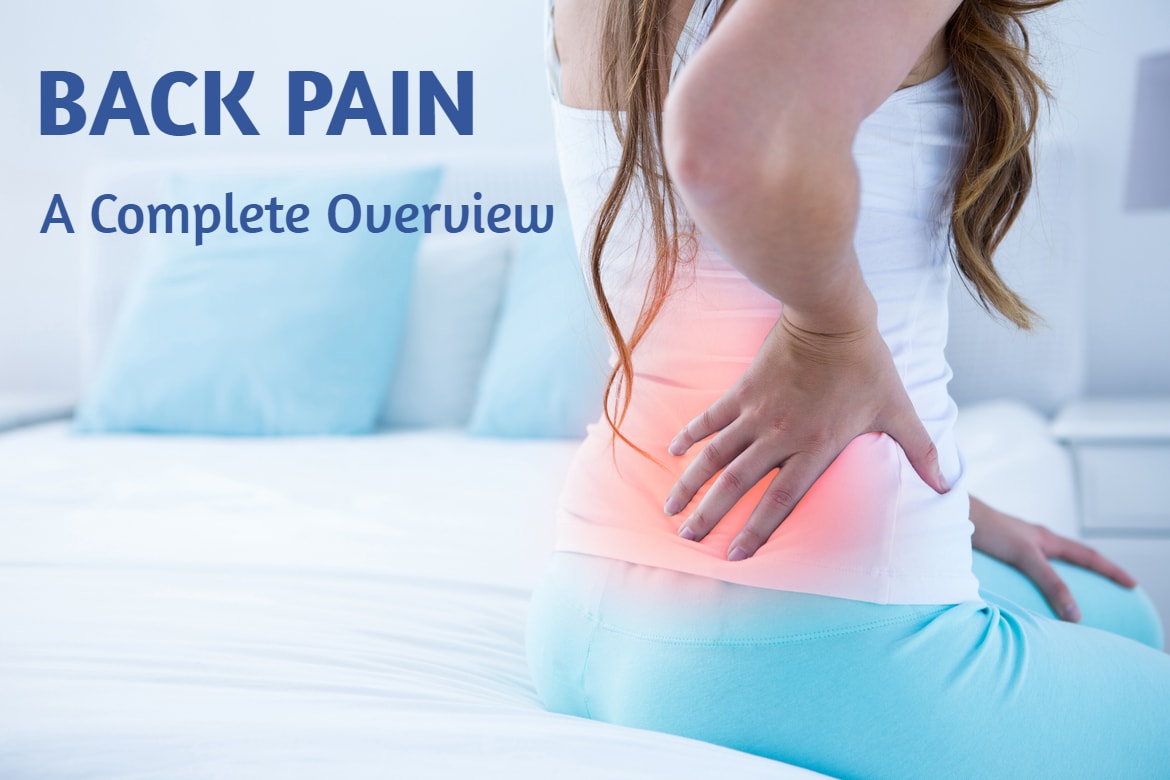Back pain is a universal term for a possibly serious illness and one of the most mutual medical problems in the United States. The worsening associated with back pain can range from a dull, constant ache to sudden, shrill pains. Although about 80% of the U.S. population will experience it at some point in their lives, back pain can develop so devastating for some patients that it delays their capability to take part in everyday activities.
Here’s what you need to know about back pain: symptoms, causes, risk factors, diagnosis, treatment & prevention.
What are the signs and symptoms of back pain?
The pain may seem to go for brief periods or become an enduring issue. Symptoms differ widely, but oftentimes include:
- Dull, continuous pain, mainly after a fall or injury
- Sharp pain, frequently after an accident or painful event
- Numbness, faintness and/or tingling in the affected area and related limbs
- Severe pain that doesn’t improve with rest and/or limited activity
- Fever
- Muscle aches or spasms
- A partial range of motion
- Weight loss
- Localized swelling, soreness, and inflammation
Seek emergency medical attention if your back pain occurs after a high-impact motor vehicle accident, a hard fall or traumatic injury or if your distress is complemented by fever and bowel or bladder control problems. These symptoms may indicate a life-threatening condition.
What causes back pain?
Back pain can be caused by a number of factors, including:
- Unexpected accident, injury or trauma, such as a fall or lifting a heavy object inappropriately
- Arthritis
- Herniated discs (a condition affecting spinal discs)
- Degenerative disc disease (a condition affecting spinal discs)
- Aging
- Obesity
- Bone fractures
- Muscle or ligament tensions
- Poor physical fitness and lack of exercise
- Scoliosis (a condition in which the spine has sideways curve)
- Occupational hazards, such as making recurrent movements or doing heavy physical labor
- Kidney infection
- Osteomyelitis (infection in the bone)
- Spondylitis (a type of arthritis)
- Pregnancy
- Paget’s disease (a bone disorder involves deformation of normal skeletal architecture)
- Spinal stenosis (a condition in which spaces within the spine become narrow)
- Sudden, irregular twisting
- Osteoporosis (weakening of bone)
- Smoking
- Unsupportive footwear
- Malnutrition
- Infections
- Stress and mental health
- Tumors
- Fibromyalgia (a condition affecting muscles and soft tissues)
- Many other diseases and complications

What factors increase the risk of back pain?
The subsequent factors are connected to a higher risk of evolving low back pain:
- A perceptually stressful job
- Pregnancy
- An inactive lifestyle
- Age – older adults have high risk than children or young adults
- Anxiety
- Depression
- Gender – back pain commonly affects females than males
- Obesity and overweight
- Smoking
- Vigorous physical exercise (especially if it is not done properly)
- Strenuous physical work.
How to diagnose back pain?
Most chiropractors, general practitioners, primary care physicians will be competent to diagnose back pain after carrying out a physical examination and questioning the patient. In most cases, imaging scans are not mandatory. The diagnostic tests/exams include:
- X-rays: They can show the position of the bones and whether the patient has arthritis or damaged bones. They are not best for spotting problems with muscles, the spinal cord, nerves or disks.
- MRI or CT scans: These are worthy of revealing herniated disks or problems with tissue, tendons, nerves, ligaments, blood vessels, muscles, and
- Bone scan: A bone scan may be used for identifying bone tumors or compression fractures caused by brittle bones (osteoporosis). The patient accepts an injection of a tracer (a radioactive substance) into a vein. The tracer accumulates in the bones and helps the doctor distinguish bone problems with the support of a special camera.
- Electromyography or EMG: The electrical impulses created by nerves in response to muscles are restrained. This study can ratify nerve compression which may happen with a herniated disk or spinal stenosis (narrowing of the spinal canal).

What is the treatment of back pain?
Most of the time, acute back pain improves within a few weeks through home treatments. For this, you might need over-the-counter pain medicines and ice or heat.
The doctor prescribes medicines according to the type of back pain that an individual patient has. Some of these medications for back pain treatment include:
-
Over-the-counter (OTC) pain relievers:
Some of the commonly recommended OTC pain relievers for acute back pain include non-steroidal anti-inflammatory drugs (NSAIDs) such as naproxen sodium (Aleve) or ibuprofen (Advil, Motrin IB, others). These should be taken as per doctor’s prescription because overdose can cause severe side effects. If these OTC medicines don’t give relief, the doctor then gives prescription NSAIDs.
-
Muscle relaxants:
If mild to moderate back pain doesn’t go away with OTC pain relievers, the doctor prescribes a muscle relaxant.
-
Topical pain relievers:
These are different creams, ointments or slaves that the patient can apply to the affected area of pain.
-
Narcotics:
There are certain drugs – codeine or hydrocodone – that the patient can use under the close supervision of the doctor.
-
Antidepressants:
It has been observed that the low dose of certain types of antidepressants such as tricyclic antidepressants (amitriptyline) provide relief from chronic back pain.
-
Injections:
If the patient doesn’t get relief from the other treatment options or when the pain spreads down the leg, the doctor injects cortisone or numbing medication into the space around the spinal cord (called, epidural space). Cortisone is an anti-inflammatory medication that decreases inflammation around the roots of nerves. The relief from these injections can last for less than a few months.
How to prevent back pain?
Having a healthy lifestyle is a good start to preventing back pain.
- Exercise: Combine exercise, like walking or swimming, with detailed exercises to preserve the core muscles in the back and abdomen sturdy and flexible. Firming your core muscles will help support your spine and can help avert back pain. Abdominal crunches and other basic exercises can help prevent back pain.
- Weight loss: Maintain a fit weight. Being overweight puts additional pressure on your spine and lower back.
- Avoid smoking: Both smoke and nicotine can cause the elastic discs that lie in between the vertebrae in your spine to degenerate or wear out, earlier than normal.
- Proper posture: Having good posture is essential in eluding low back problems. The way you stand, sit, and lift things has an influence on your spine health.

Contact Cruz Chiropractic & Wellness for the best treatment for back pain:
One of the best chiropractic centers in NYC, Cruz Chiropractic & Wellness provides customized treatments for back pain that not only provides complete relief but ensures the longevity of the relief so that you can live a pain-free healthy life. You can contact us by visiting our website or by calling 212-967-1448
***The information provided in this article doesn’t constitute medical advice, it is only for the patients looking for general information about back pain***

